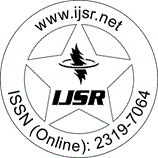Downloads: 111
India | Electronics Communication Engineering | Volume 3 Issue 5, May 2014 | Pages: 512 - 515
Control and Monitoring of Home Appliances from a Remotely Located Cellular Phone
Abstract: The main inspiration for this project was drawn from the recent hikes in the electricity charges in India. It is a general habit to leave all the light, fans and other electrical appliances (such as mobile phone charger etc) switched on even after we leave our homes; sometimes in haste and most of the times in sheer carelessness, costing us huge electricity bills. Also it is a general practice in educational institutions (particularly in colleges) to keep the lights and fans of all the classrooms on, even when no classes are taking place. Our project aims at developing a device that would allow a user to remotely control and/or regulate and monitor multiple home appliances using a cellular phone. This system will be a flexible tool that would be able to offer this service at any time, and from anywhere within the constraints of the technologies being applied. Possible target appliances include (but are not limited to) security systems, lights, fans, etc. In short anything with an electrical interface can be regulated using this device. Nowadays, the communications have become very simple, fast, interactive and more compact, that makes the globe as a small village. So it is very easy for anyone to subscribe in the local or global telecommunication networks with individual mobile phone device. Mobile devices, such as mobile phones, are becoming multipurpose devices. These devices are capable of storing data as well as running custom application. As more people adopt these devices and begin to use them for personal or business tasks, the need for controlling access to the data stored within the devices will become vital.
Keywords: Home Appliances, Cellular Phone
How to Cite?: Aranya Sarkar, "Control and Monitoring of Home Appliances from a Remotely Located Cellular Phone", Volume 3 Issue 5, May 2014, International Journal of Science and Research (IJSR), Pages: 512-515, https://www.ijsr.net/getabstract.php?paperid=20131831, DOI: https://dx.doi.org/10.21275/20131831
